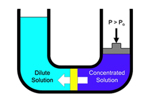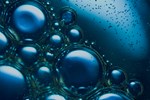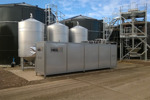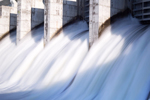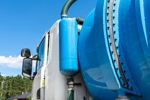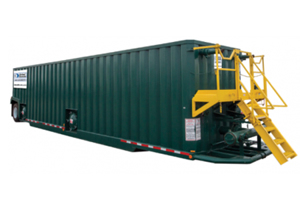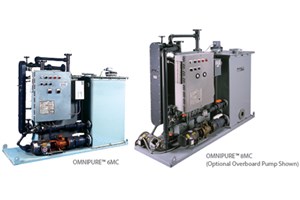INDUSTRIAL WATER AND WASTEWATER TREATMENT
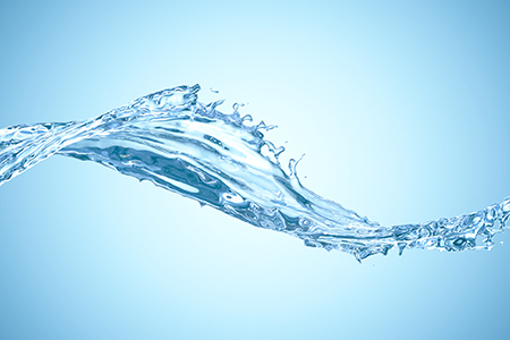 The New Imperative For Water Treatment: A Shift From Compliance To Efficiency
The New Imperative For Water Treatment: A Shift From Compliance To Efficiency
As water scarcity and energy costs rise, new ultrafiltration membrane technologies deliver higher flux, longer lifespan, and reduced fouling—turning water treatment from a compliance task into an efficiency opportunity.
WATER AND WASTEWATER SOLUTIONS FOR THE OIL AND GAS INDUSTRY
-
Optimizing RO-Membrane Performance In Produced-Water Applications
Here are several important considerations for getting maximum value from produced-water RO treatments at minimal total lifecycle costs.
-
Flare Gas Flow Measurement And Control
In oil/gas production, refining and storage operations around the globe, flare gas systems are used to burn-off and dispose of waste, excess or off-gases, and as a safety system. The accurate, responsive and reliable measurement of flare gas is essential in order to assure proper operation of the flare gas system, which protects people and equipment from potentially hazardous combustible gas to maintain a safe working environment and to avoid environmental contamination.
-
Advanced Aeration In Hydraulic Fractured Water Impoundments
With so much attention paid to the fate of frack water — how it’s handled and cleaned — it’s time to consider the effectiveness of prevailing treatment methods.
-
IDE Showcases Evaporator For SAGD Water Treatment In Canada
IDE recently hosted exclusive guided tours of its horizontal falling film evaporator for SAGD water treatment at the fabrication shop in Calgary, Alberta. Over three days more than 120 industry professionals had the opportunity to experience IDE's SAGD Horizontal Evaporator first hand.
-
Resolving High PH For Mining Operations
For an open-pit taconite mining operation in Minnesota, high pH groundwater required round-the-clock pumping to comply with discharge permit limits. After management installed a control system to neutralize the pH, the treated water leaving the site now meets permit limits. Read this case study to learn more about the installed system and results.
WATER AND WASTEWATER SOLUTIONS FOR THE FOOD AND BEVERAGE INDUSTRY
-
We Brewed Beer From Recycled Wastewater — And It Tasted Great
On Earth Overshoot Day (August 22 this year), Village Brewery, a Calgary craft beer-maker, joined University of Calgary researchers and Xylem Technologies, a U.S.-based water technology company, to brew a crisp blond ale from reused wastewater — the first case of direct potable reuse in Alberta and possibly Canada.
-
Flow Meter Ensures A Smooth Running Recovery Process At Bakery Production Plant
Employing roughly 5,000 workers in 12 countries, Vandemoortele bakery and production plant owes its success to high standards of quality, innovative production technologies, and a flair for finding economic alternatives. The latest example is the SITRANS FC430 Coriolis flow meter.
-
Winery Becomes California's Most Eco-Friendly With Advanced Biological Treatment And Nutrient Removal
The TITAN MBR helped a winery become the first ever to earn a LEED Platinum Certification for new construction in 2018 (Leadership in Energy and Environmental Design).
-
Conducting Accurate Conductivity Measurement In Industrial Applications
While some water quality parameters may get more attention in industrial settings, few are more critical than conductivity. Understanding conductivity monitoring for industrial applications — where it is needed, how it works, and how to leverage the appropriate instruments and standards in order to pinpoint it — will unlock huge gains in efficiency, effectiveness, and regulatory compliance.
-
The Multiple Uses For Heat Exchangers In Brewing
There are numerous uses for heat exchangers in breweries — from cooling, pasteurizing, and fermenting products to efficiently dealing with waste streams such as yeast slurry. Compared to other methods of heating, heat exchangers can be much more energy-efficient, providing both environmental and economic benefits.
WATER AND WASTEWATER SOLUTIONS FOR THE POWER GENERATION INDUSTRY
-
From Drought To Deluge: Gauging The Impact Of Western Rains For a number of years now, we have heard of dwindling water supplies in the western part of the U.S., but 2023 brought "atmospheric rivers" that (literally) flooded the Golden State and filled 12 of its 17 major reservoirs above their historical averages for the start of spring. It's a double-edged sword when such extreme weather arises, and obviously important to learn from the experience to better prepare for future events and plan for both resiliency and sustainability.
-
If Israel Can Find Common Ground Around The Environment, Why Can't Texas?
Deep in the Israeli desert is an academic institute that is building peace in the region by putting nature at its center. The Arava Institute, in partnership with Ben Gurion University, brings students from Israel, Palestine, Jordan, and around the world to find common ground around environmental problems and build trust — and peace — from there.
-
3M Purification Filtration In Process Cooling Water
The water used in cooling water systems must be filtered to reduce particulates and help protect downstream process equipment from various sources of contamination at numerous entry points.
-
QUA UF Membranes Provide Pretreatment for Seawater Reverse Osmosis (SWRO) System
Hinduja National Power Corporation Ltd. (HNPCL) constructed a 1040 MW coal fired power plant at Vishakhapatnam, Andhra Pradesh, India. The power generated from the plant is intended to supply to Andhra Pradesh, as well as to other states through interstate transmission system.
-
Relieving The Pressure Of Monitoring Peak Boiler Water Efficiency
Industrial operations across the gamut leverage boiler water, the liquid that passes through a boiler and is converted into steam, thus powering operations around the world. But not all of them do as much as they could to ensure peak boiler water efficiency. Through the proper treatment considerations and quality measurement knowledge, every industrial player can make the most of this central process.
WATER AND WASTEWATER SOLUTIONS FOR INDUSTRY
-
Optimizing RO-Membrane Performance In Produced-Water Applications
Here are several important considerations for getting maximum value from produced-water RO treatments at minimal total lifecycle costs.
-
Reducing Wastewater Hauling Through An Advanced Membrane Treatment Technology Hauling wastewater is one of the most expensive and least sustainable means of managing wastewater, significantly impacting the environment through carbon emissions, and drastically increasing operational costs. As industries strive to meet environmental and economic goals, finding sustainable wastewater treatment methods is needed — now more than ever.
-
From Drought To Deluge: Gauging The Impact Of Western Rains For a number of years now, we have heard of dwindling water supplies in the western part of the U.S., but 2023 brought "atmospheric rivers" that (literally) flooded the Golden State and filled 12 of its 17 major reservoirs above their historical averages for the start of spring. It's a double-edged sword when such extreme weather arises, and obviously important to learn from the experience to better prepare for future events and plan for both resiliency and sustainability.
-
High-Capacity Filtration Plus Ultraviolet Disinfection For Cooling Towers Means More “Uptime” For Server Farms
Most of us use computers or smartphones on a daily basis. But we usually don’t know what goes on behind the scenes — the technology that allows us to use cloud computing or even Google search. And we certainly aren’t aware of the infrastructure needed to support that technology — like cooling towers.
-
Growing And Flourishing In A Desert
Water is essential to life. And it is a very precious commodity in Israel, home to 9 million people living in a rocky desert that receives about 10 inches of rain a year. By comparison, Denver, considered semi-arid, gets about 15 inches of rain a year, which is about a fourth of the precipitation a tropical city such as Miami receives.
-
Railroad Bridge Repaired Using Geopolymer Mortar
A bridge in Laurel, Montana needed repairs as the concrete showed signs of distress due to climate and environmental conditions. Read the case study to learn how Geoploymer mortar saved the day.
-
Flare Gas Flow Measurement And Control
In oil/gas production, refining and storage operations around the globe, flare gas systems are used to burn-off and dispose of waste, excess or off-gases, and as a safety system. The accurate, responsive and reliable measurement of flare gas is essential in order to assure proper operation of the flare gas system, which protects people and equipment from potentially hazardous combustible gas to maintain a safe working environment and to avoid environmental contamination.
-
A Rosemount Chlorine Analyzer Proves Just The Job For Seawater Duty At Dow's Terneuzen Site
The Dow Benelux site in Terneuzen, the Netherlands, uses seawater for process cooling. Environmental regulations require careful control of the concentration of chlorine added to control microbial fouling. The existing chlorine measurement system had become outdated, so after stringent tests Dow decided to replace it with a Rosemount Model TCL analyzer from Emerson Process Management.
-
Advanced Aeration In Hydraulic Fractured Water Impoundments
With so much attention paid to the fate of frack water — how it’s handled and cleaned — it’s time to consider the effectiveness of prevailing treatment methods.
-
We Brewed Beer From Recycled Wastewater — And It Tasted Great
On Earth Overshoot Day (August 22 this year), Village Brewery, a Calgary craft beer-maker, joined University of Calgary researchers and Xylem Technologies, a U.S.-based water technology company, to brew a crisp blond ale from reused wastewater — the first case of direct potable reuse in Alberta and possibly Canada.



